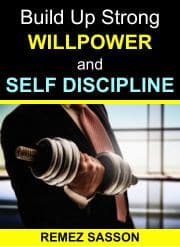
Do you sometimes find yourself stuck at work, in relationships, or with your goals, trying to decide what to do next? You can get yourself unstuck and move on.
Being stuck means feeling like there’s no way out, which can feel like an all-encompassing malaise.
If you find yourself in this situation, it might not be a bad idea to unclench your fist and unplug from it for a little while. After all, getting unstuck is a process that requires patience and practice.
Browse our online courses on meditation, positive thinking, overcoming procrastination, confidence, and freedom from distractions.
There’s no denying that the world has become increasingly fast and digital. Businesses are constantly looking for ways to stay competitive. New technologies, platforms, and apps are emerging every day.
As a result, people need to be nimble to keep up with changing demands. That said, getting anything done these days can also feel almost impossible.
With quick access to information at our fingertips 24/7, shutting off our digital devices long enough to focus on the task can be challenging.
Finding something that will help us get unstuck so we can return to it later with fresh enthusiasm and focus is also challenging.
The good news is that many of us are stuck because we don’t know where to start or what action to take next to progress.
The bad news is that feeling stuck generally means we’re not taking action or progressing in the right direction.
With that in mind, here are seven steps on how to get unstuck and take action.
7 Steps to Get Yourself Unstuck and Take Action
Discover how to get unstuck and move on.
Step One: Realize You Are Stuck
If you constantly feel like you “can’t get unstuck,” you’re probably stuck in a negative mindset. While you might feel stuck, you’re not stuck; in fact, you’re in a position to take action.
You just need to take a step back and recognize that you’re not stuck at all.
Feeling stuck is often a sign that you’re overwhelmed or frustrated by the current situation. Take a step back and ask yourself what you can change about the situation or what you can do specifically to improve your situation.
Be as specific as possible when thinking about what you can change or what you can do differently.
When you first start to unstick yourself, you want to start with small, specific changes you can immediately make. The more specific you can be, the better.
Related: Do You Finish What You Start Doing?
Step Two: Take a Break
Whether it’s a day, a week, or a month, taking a break is a great way to unclutter your mind, unplug from the situation, and get some perspective on the situation.
It might feel like you have to start all over again, but leaving the situation you’re stuck in can do wonders for your perspective on the situation.
During your break, try to avoid anything related to your problems. Just unplug from the situation.
Also, try to unplug from social media and get away from the computer, phone, and other devices.
Step Three: Talk to Someone You Trust
If you’re feeling stuck, chances are you’re also feeling like you’re entirely alone.
Unplugging from the situation and taking a break doesn’t mean you’re alone. You might be surprised to find out how many people you trust and care about who have been there for you in this situation.
Ask someone you trust if they’ve been stuck in the same situation and what they did to unclutter their mind and get unstuck. You might be surprised to find out that their solutions have been right in front of you the whole time.
Step Four: Set Goals and Deadline Dates
Setting goals not only helps you set a timeline for your actions, but it also helps you set a specific outcome for your actions.
By setting deadlines, you’re setting a specific time frame for your actions.
You can use deadlines to help you track your progress and stay on track with your actions.
Setting goals and deadlines for yourself can be a great way to unclog your mind and get unstuck.
Step Five: Do the Work You Know You Have to Do
If you’re feeling stuck, chances are you’re avoiding doing some work that you know you need to do. Chances are you have high-priority work that you need to do.
In this case, if you want to unclog your mind and get unstuck, you need to start getting back to work.
We often avoid, for various reasons, what we need to do, and this gives us the feeling that we are stuck. By doing exactly what we avoid doing, we force ourselves to find solutions and do the things we avoid doing.
By avoiding high-priority work, you’ve avoided important opportunities to unclog your mind and get unstuck.
Step Six: Find New Ways to Do Old Tasks
If you’re finding yourself stuck in a situation, chances are you’re using the same ways to “get unstuck” as you have in the past.
If you want to unclog your mind and clear the situation, you need to start looking for new ways. If you’ve been using the same unsuccessful ways as before, you need to stop and find new ways.
That could mean that those ways are outdated, do not work, and might keep in the same situation without making any progress.
Step Seven: Network with People You Trust
Another way to get unstuck and move on is by building your network. Build a network of people who can advise you and help you in various ways through their expertise.
Surround yourself with friends, family members, and colleagues who have experience getting unstuck and can give advice, encourage, and motivate you.
Conclusion- How to Get Unstuck
You can take action and move on. If you constantly feel like you are stuck at work, in a relationship, with your goals, or any other area, stop what you are doing and think.
Find what you are doing wrong. You certainly need a change in perspective, and taking a break from it all is the right thing to do. this is a must step to learn how to get unstuck.
Depending on the issue and the situation, a break can be for a few minutes, an hour, a day, or even a few days. Getting away from your problem allows you to see things from a fresh point of view.
Taking a break is a great way to unclutter your mind, unplug from the situation, and get some perspective on the situation as a whole.
Talk to someone you trust. You might be surprised to find out they can be helpful.
Don’t forget to take action and move on, even if you make mistakes. Action helps you get out of a stuck situation. Being passive and standing still leads to stagnation, while moving on leads to growth.
Browse our online courses on meditation, positive thinking, overcoming procrastination, motivation, confidence, and freedom from distractions.



